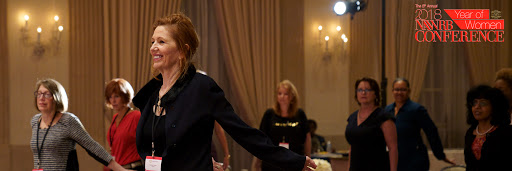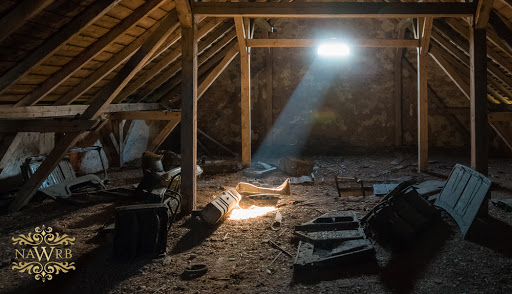Know the Rules of the GameⓇ Podcast is releasing new episodes each week at https://www.nawrb.com/podcast/

Know an Incredible Woman Preserving the
Quality of Life During COVID-19?
Submit your story today!
Read More

Consulting & Branding Opportunities
Grant your business access to insider,
proven knowledge to improve the quality of your procured
services and maximize business performance.

If you need D&I
Contact Us!
A Team Focused on Bring Diversity and Inclusion to Every Level
Learn More

#1 Top Real Estate Influencer
Desiree Patno
Diversity & Inclusion, Quality of Life, Know the Rules of the Game ®
Your Next Event
Grow Your Business
NAWRB: An SBA Resource
NAWRB is listed as a women-owned business resource for the SBA.
Check It Out
NAWRB Aging Population
Help Protect Elders
from Financial Abuse
Over $36.5 billion a year is lost annually in the U.S.
Prevent Financial Abuse

Women's Homeownership:
Dream. Stability. Sanctuary.
Life often presents us
with unplanned disruptions.

AI Technology
with
a Human Touch
Is
The Perfect Balance


NAWRB Women's Global Resource Center
A women’s depository for vendors & clients to grow their diverse spend & increase women’s employment at all levels within the housing ecosystem.

Tag Archives: entrepreneurship
WHER Chat: California is Home to Top Cities for Minority-Owned Startups
Ecommerce software platform Volusion released a report on the top places in the United States with the greatest share of minority-owned startups. Their findings show that five out of the top 15 metropolitan areas with the highest share of minority-owned startups are in California, and only the top nine areas have more than 40 percent minority-owned startups.
U.S. Metro Cities Where Minority Businesses are Thriving and Struggling
There are approximately 8 million minority-owned businesses in the United States, and each faces its own obstacles in terms in reaching success, such as access to capital and location. LendingTree just released a new report on the top cities where minority-owned businesses are succeeding, such as those whose annual revenue exceeds $500,000, and places where businesses are struggling to remain afloat.
SHETalk: Tami Bonnell of EXIT Realty
To say that we had compelling, witty, and even funny speakers at this year’s conference would be an understatement. So, we knew when CEO of EXIT Realty Corp. Tami Bonnell signed on to deliver a SHETalk at our 2018 Conference in Chicago, we knew we were in for a treat.
Tami has more experience than most in real estate, selling her first house at thirteen and obtaining her real estate license the day she turned eighteen. Even with that experience, she has had to work hard to reach the level of influence she has today. In her SHETalk, she shared a few ways she keeps ahead of her goals.
“It’s Your Mindset and What You Do with Your Time that Really Matters”
“You know, I want to put you in a different head space today,” Tami said as she introduced the system helping to grow her business every month. She emphasized the principles she was about to introduce can apply to any business—not only real estate.
First, she asked everyone in the audience to participate in an exercise where we all stood up, stretching our arms out as far as possible. Then, she asked us to close our eyes and imagine our arms going about a foot farther. When our eyes opened, our arms were much further than we imagined.

“Everything that we do is because of how we think,” she began. “It has nothing to do with the circumstances you’re in; it has everything to do with the choices we make.It’s your mindset and what you do with your time that really matters,” she said, adding “Choosing to do something with deliberate intent is how you get from Point A to Point B.”
Most of us of us have run out the door with a list of more things than we have time for, she told us. We say “we must” and “we have to” when really, we should want and expect it. The problem with the “musts” and the “have tos” is that our subconscious mind doesn’t accept the negative the same way it does the positive. If we say we want and expect, it will help us to follow through.
Finding Your Path
Sometimes, in order to get done what we want and expect to get done, we have to find a more balanced way of doing things. When she started at EXIT twenty years ago, it was a Canadian company with no office in the U.S. She bought the rights to the entire New England states, building the US brand from a dead stop. From scratch, she cultivated 35,000 agents and traveled frequently to build momentum, driven forward by thinking of everyone she was responsible for on a daily basis. Her hard work paid off as she became US Vice President within her first year, President the second year and CEO of the company in 2012.
She came home late one night a couple of years into traveling to build EXIT. As she pulled up, she noticed for the first time beautiful Paul Revere lanterns in her circular driveway and in the backyard. She walked in and said to her husband “Thank you so much honey, I wanted those forever I love those lanterns, they’re beautiful.” He replied “Your welcome, I put them in six months ago.” That moment was a wake-up call for Tami. “I really started working on ‘I’ve got to do this smarter, I’ve got to do this better,’” she said.
Working with Your Dirty Dozen and the 30,000, 2,000 Foot and Street Level Views
The better way is a plan that builds in time to work on the long view of whatever you are trying to accomplish, personal and professional. Committing is often the hardest part, says Tami as most people live on the sidelines in a safe area. But with this plan, you can build in time to take in the long view.
One hour a month should be set aside to look at the 30,000-foot view. This is a time to think about where the trends are in your industry. What are the resources that you should be going to every single month? If you spend time looking at things from the 30,000 foot view, you’ll know what’s selling and what’s not, you’ll be ahead of the curve on trends and will better be able to find your niche and can take advantage of every opportunity.
Who Are Your “Dirty Dozen”?
According to Tami, your “Dirty Dozen” are twelve people in or related to your field with whom you form a connection—such as a leader you’d like to follow and with whom you can share information every four-to-six weeks.The second hour of the month should be spent looking at your goals from a 2,000-foot view, say at the statewide level and touching base with six of your Dirty Dozen. For someone in real estate, this could be one person from the government on a state level and one from the local level, for example.
In order to develop these connections, you should look to help them more than they help you—add value to their lives, do your homework and find out about them. The relationship doesn’t have to be a “tit for tat” transactional relationship, it can be more personal Tami points out. “People want to matter,” she says adding that if you find common ground and build a connection, it will pay off.
For the third hour, you want to look at you, Tami says. Ask yourself some effective questions like “What am I really good at?” and “What do I need to do to get where I want?”
For the final piece of the puzzle, she introduced a four-hour action plan where halfway through the month, you plan out six weeks ahead of time and make sure to book off four hours to work on yourself and your plan. Look out over those six weeks with where you want to be in mind. And do it for your whole life both personal and professional. “I have birthday cards in my glove compartment in case I just forgot,” Tami says, illustrating her point.
You can even incorporate a small part of this planning ahead philosophy on a daily basis. Tami said she takes 120 seconds every morning to say how her day will go and think about how she wants the people she encounters to feel. At the end of every day, she takes 120 seconds to think about what worked for that day and what she is grateful for, and she writes down any concerns or problems.
“All of us are a work in progress,” said Tami as she closed out her SHETalk. “Every segment starts to connect and then you excel.”
We can’t wait to get started.
Innovative Ways Women Entrepreneurs Can Gain Access to Capital
Capital is pivotal for the success of any entrepreneur to launch a sustainable and lucrative business. Traditional routes of access to capital are changing as technological development creates new avenues, and the distance between entrepreneur and investor decreases due to an increase in fast and efficient communication.
Women entrepreneurs have notoriously faced hardships in gaining access to capital, from lack of information and resources and local and state government assistance, to facing cultural biases from investors. A 2014 report by the U.S. Senate Committee on Small Business and Entrepreneurship states women business owners received 16 percent of small business loans and 17 percent of loans from the U.S. Small Business Administration.
2018 Live Conference Updates: OMWI/Procuring Contracts
Procuring contracts may not sound the most glamorous of topics, however, this panel was not only information-packed but all of our speakers from government and local agencies made themselves incredibly accessible to our attendees. Continue reading →
John Yen Wong, Founding Chairman of AREAA, & Betsy Berkhemer-Credaire, CEO 2020 Women on Boards on NAWRB Conference, Year of Women
We are thrilled to have the support of John Yen Wong, Founding Chairman of the Asian Real Estate Association of America (AREAA) and Betsy Berkhemer-Credaire, CEO and L.A. Chapter Co-chair of 2020 Women on Boards ahead of our 5th Annual Conference in Chicago!
John keeps it simple:: “NAWRB: Great Content, Great Speakers, Great Conferences, Great People, Great Organization.”
While Betsy sums up her strategic alliance with NAWRB this way “ “Congratulations to NAWRB, on your big national conference in Chicago! As CEO of 2020 Women on Boards, I am pleased we have a strategic alliance with NAWRB, as we both dedicate efforts to advance women in their careers, and to be part of the massive campaign to increase the numbers of women directors on corporate boards to at least 20% by the year 2020. We applaud your success as women business leaders in real estate!”
With John and Betsy behind us, we continue to rock our initiatives of advancing women on boards and pushing for diversity and inclusion at every turn.
See you in Chicago!
Real Estate Agent, Or Treasure Hunter?
Uncovering a home’s story is the best part of the job
A recent story making the headlines sparked our imaginations. While not directly relating to real estate and housing, its premise is familiar to anyone who has discovered long-lost memories within an older home.
A Georgia woman walked into her local Goodwill and noticed a vintage slide projector. She opens it up upon purchasing, and in the course of doing so, is taken back in time; pulled into the world of a family from another era.
Goodbye Sweet Spade: Remembering the Influential Style of Kate Spade
Today we are saddened to find out that the influential designer Kate Spade was found dead. For someone known for an elegance associated with brightness and a certain smart yet playful style- it’s painful to think of such a voice being extinguished.
Kansas City, Missouri native Spade, who recently legally changed her name to Kate Valentine was an answer to an unspoken sartorial prayer: smart, put-together clothing with a quirky flair. Distinguished while not shying away from femininity, Kate helped women in the 1990s and early 2000s realize that to be taken seriously in the workplace doesn’t necessarily mean you have to have massive shoulder pads, dress like a man, or wear uncomfortable heels.
It really started with a handbag. The quest for an attractive yet practical tote, often a woman’s rolling office, medicine cabinet, and make-up bag, was the driving force behind the start of her eponymous brand.
She grew Kate Spade into what we would call today a fully fledged lifestyle brand: including a home and jewellery line. In the process she became much more than a designer: she became a woman to admire for her unique blend of tastemaking and business acumen. Not unlike a Diane von Furstenberg, Tory Burch or Donna Karan.
As recently as 2015 she was named amongst Creative People in Business by Fast Company and inducted into the University of Missouri-Kansas City Hall of Entrepreneur Hall of Fame this past year.
She was someone to look up to and will be dearly missed. Our condolences go out to her family and everyone whose lives she touched.
Has the Role of Women in Business Made Progress?
During 2017, there was a noticeable increase of women’s leadership conferences held across the country and the world. At these conferences, women participated in dialogues regarding business strategies and discussed mutual professional challenges. Thus, while 2017 was a year in which women made strides, what was the path leading up to this movement toward professional growth? Specifically, are women in the industries of real estate and technology ready for change?
History
Women first became involved in the real estate industry as brokers and agents in the late 1800s and became well accepted as real estate professionals due to, if nothing else, the sheer number of women involved in the industry. Today women hold the majority of residential real estate positions, but men still maintain most executive positions. In the commercial real estate market, men dominate the profession.
A 2016 Current Population Survey conducted by the U.S. Bureau of Labor Statistics found that women working in the real estate industry earn only 64 percent of a man’s annual average salary. While women have advanced in the residential real estate industry, they can still make strides by bridging the pay gap, gaining equal leadership positions and increasing sales in commercial real estate.
Compare this to women in technology. In the past thirty years, relatively few women have developed careers in technology fields, let alone high tech fields. In fact, according to the National Center for Women and Information Technology’s (NCWIT) 2016 Women in Tech Report, the peak of women’s involvement in technology occupations, such as computing industry careers, was in 1991 when women held 36 percent of computing jobs. Women’s involvement has never since reached this percentage, but as the world becomes increasingly reliant on technology, more women will likely enter the field.

 Login
Login














